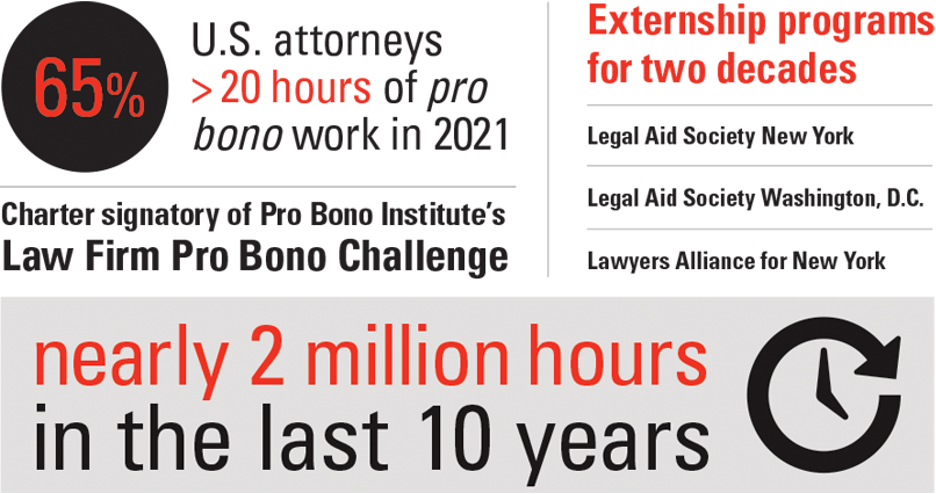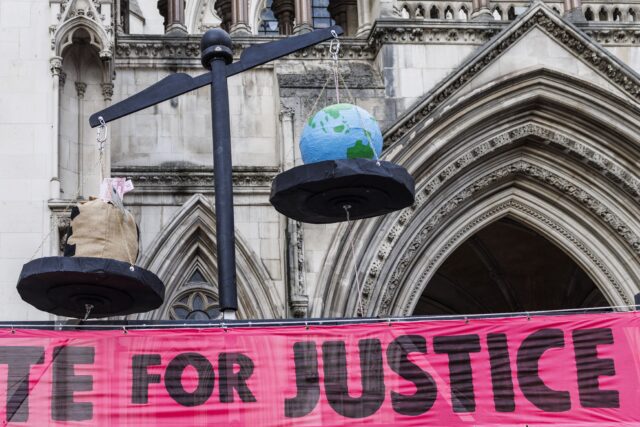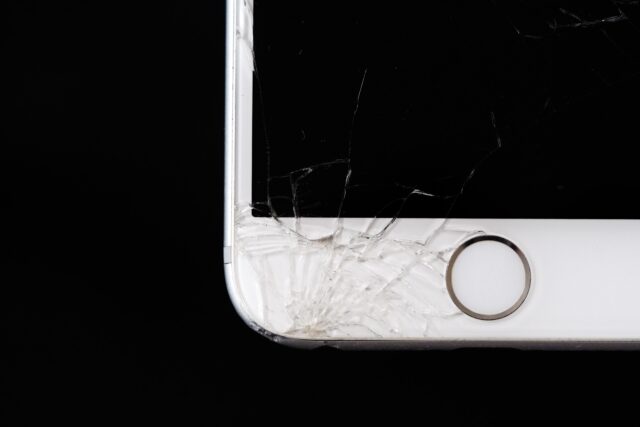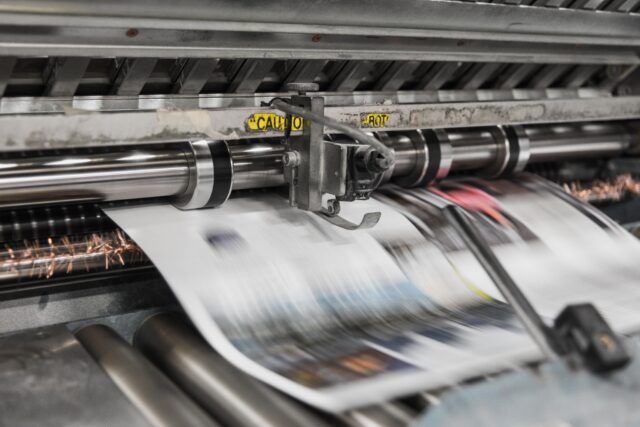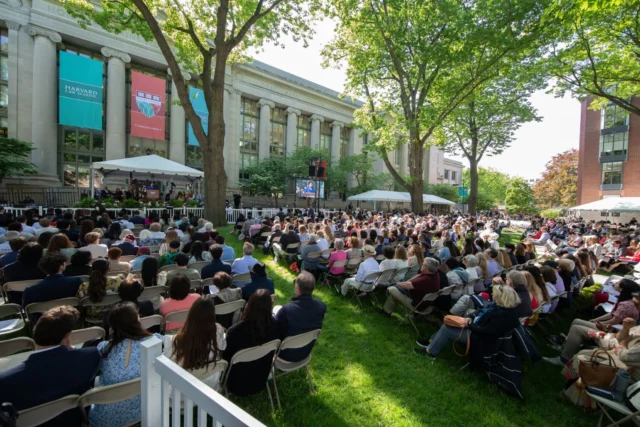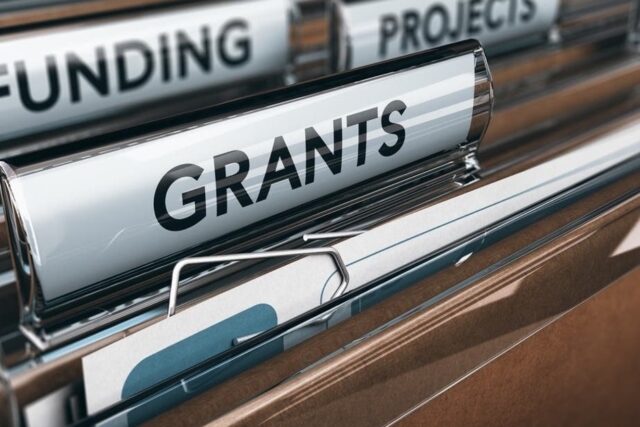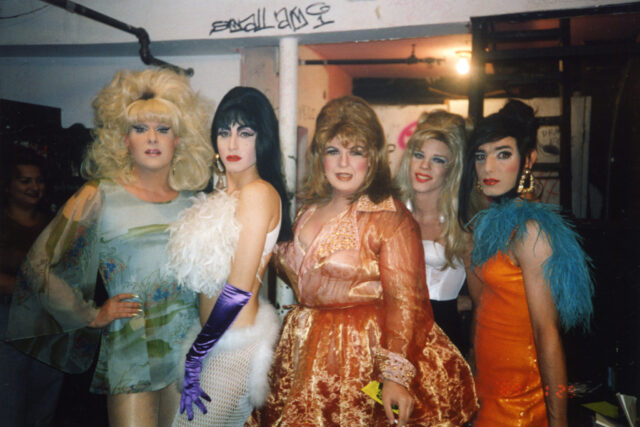What ‘Good’ is Pro Bono?: How Big Law Firms Use Pro Bono To Mask Harm
Big Law's False Promise of Pro Bono
Logan Campbell
January 20, 2023
This Veterans Day, the law firm Kirkland & Ellis dedicated its homepage to how it is “serving those who’ve served us.” The dedication explained that there are 17.4 million veterans in the United States, many of whom “struggle with unemployment, poor mental health, and homelessness.” Additionally, it detailed the dozens of veterans the firm has represented over the years and the 3,000 pro bono hours the firm’s attorneys and staff devoted to helping veterans in the last year alone.
Pro bono publico, commonly shortened to pro bono, is the legal practice of serving people in need free of charge. The phrase is Latin, translating to “for the public good.” The idea behind the practice is that lawyers are uniquely skilled and uniquely privileged and, therefore, must give back for the betterment of the community.
Over the last four years, Kirkland highlighted its pro bono work with veterans on or around Veterans Day with different posts in 2019, 2020, and 2021.
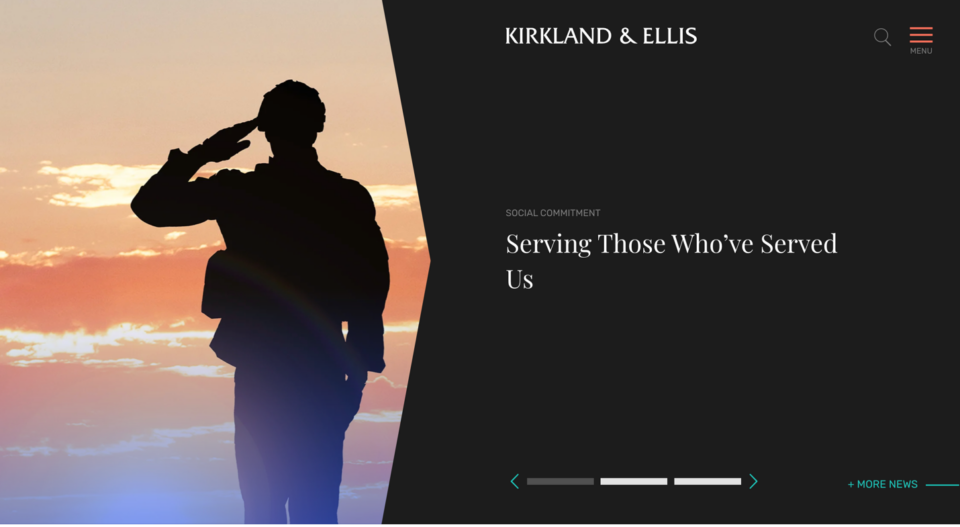
A screenshot of Kirkland’s homepage on Veterans Day 2022.
Left out of the narrative is how, over the last four years, Kirkland has also been fighting against nearly 300,000 veterans and servicemembers in court.
Kirkland & Ellis is representing the company 3M in the largest ever multidistrict litigation (MDL) – a mechanism to consolidate cases with common facts all before one court – in 3M’s attempt to avoid paying for injuries its faulty products caused veterans. 3M would like you to recognize its name because of its Post-It Notes™. However, in this case, the common (alleged) facts are that 3M produced defective combat earplugs, discovered the defects, sold the earplugs to the U.S. Military anyway, and then lied about the defects. Hundreds of thousands, if not millions, of servicemembers used these earplugs.
All 290,000 veterans and servicemembers in this MDL have alleged that 3M’s earplugs have harmed their hearing in some capacity. Some have lost their hearing entirely. Others now live with tinnitus, hearing a ringing in their ears that is not caused by external sound. Still more of the plaintiffs suffer from a combination of hearing loss and tinnitus. They all claim that the faulty earplugs are part of or the entire cause of these losses. 3M’s earplugs failed to protect servicemembers during training and in the field of battle.
Studies have found that hearing loss contributes to a host of other issues. For example, the National Institutes of Health has found a strong association between hearing loss and depression. Meanwhile, in some instances, tinnitus may interact with insomnia and anxiety, creating a vicious cycle that exacerbates each issue. According to the Hearing Loss Association of America, “hearing loss has been shown to negatively impact nearly every dimension of the human experience, including physical health, emotional and mental health, perceptions of mental acuity, social skills, family relationship, and self-esteem.”
3M has already settled with the U.S. government for selling protective hearing equipment it knew to be defective. A whistleblower complaint raised the initial allegations against 3M. The complaint alleges that 3M and its subsidiary, Aearo, knew that the earplug design was defective when bidding for the government contract, made false statements, and designed faulty tests to keep selling the earplugs to the government. In light of these accusations, 3M paid the government $9.1 million. However, 3M refused to accept liability (legal responsibility) for its actions.
Aside from the whistleblower settlement, individual veterans who have suffered because of the faulty earplugs have filed civil suits. These suits have been consolidated into an MDL. MDLs are complex in structure. MDLs are like class-action lawsuits in that both streamline the litigation process by bringing together similarly situated claims. While class-actions combine all claims into a single suit, MDLs keep the claims separate but place them all before the same court. The MDL process uses “bellwether trials” to help determine outcomes and damages for all affected. In the bellwether process a representative sample of cases from the larger body of lawsuits go before a jury. In this situation, the veterans’ and Kirkland’s attorneys alternated picking the plaintiffs for the bellwether trials. The court then uses the outcomes from the bellwether cases to gauge jury reactions and create a guideline for how much the entire MDL is worth.
In the 3M case, courts across the Eleventh Circuit held 16 bellwether trials. The first bellwether trial found $7.1 million in damages for the veterans involved. However, Kirkland successfully defended 3M in the second bellwether case, convincing the jury to side against the injured veteran. Kirkland then bragged about this outcome on the same website it used to show off how it “serves those who served” and even gave the attorneys involved an award.
In total, ten bellwether trials found for the veterans, and six found for 3M. Since some of the bellwethers had multiple plaintiffs, juries found in favor of 13 of the 19 bellwether plaintiffs. The total amount awarded to veterans in the successful bellwethers was over two hundred and ninety-eight million dollars, $298,562,320 to be exact. Some veterans in these cases have yet to receive a penny, as Kirkland and 3M routinely appeal these awards.
“Woefully underfunded” may be an understatement.
The full cost of the earplug litigation depends on how the MDL plays out. 3M has proposed a settlement where it would allocate around $1 billion to pay out the remaining claims. The lead attorney for the veterans and servicemembers described this figure as “woefully underfunded.” Juries in the 16 bellwether cases awarded 13 servicemembers nearly a third of a billion dollars. Nearly 300,000 veterans have cases yet to be resolved. An expert hired by the plaintiffs said 3M faced potential losses of over $100 billion. “Woefully underfunded” may be an understatement.
If Kirkland and 3M have their way, the veterans may receive even less. Three and a half years into the MDL process, Kirkland now claims that 3M cannot be held liable. Instead, Kirkland argues, 3M’s former and now bankrupt subsidiary, Aearo, is the only entity liable. This argument is important because, if successful, it would mean that 3M owes nothing to the injured veterans. Further, Kirkland attorneys are now attacking and, in the words of the district court, “vilifying” the entire MDL process. The court accused Kirkland attorneys of casting aspersions of illegitimacy on several years of meticulously planned legal proceedings. Kirkland is using these tactics to deprive hundreds of thousands of veterans and servicemembers of compensation.
Kirkland’s commitment to the public good, like its client’s settlement offer, is woefully underfunded.
The earplugs litigation dominates Kirkland’s caseload. The legal research database Westlaw keeps track of the legal dockets involving Kirkland & Ellis, including cases back to 1978. The Westlaw database has records of 141,039 such dockets. Nearly 120,000 of those dockets are attached to 3M and 3M’s subsidiary, Aearo.
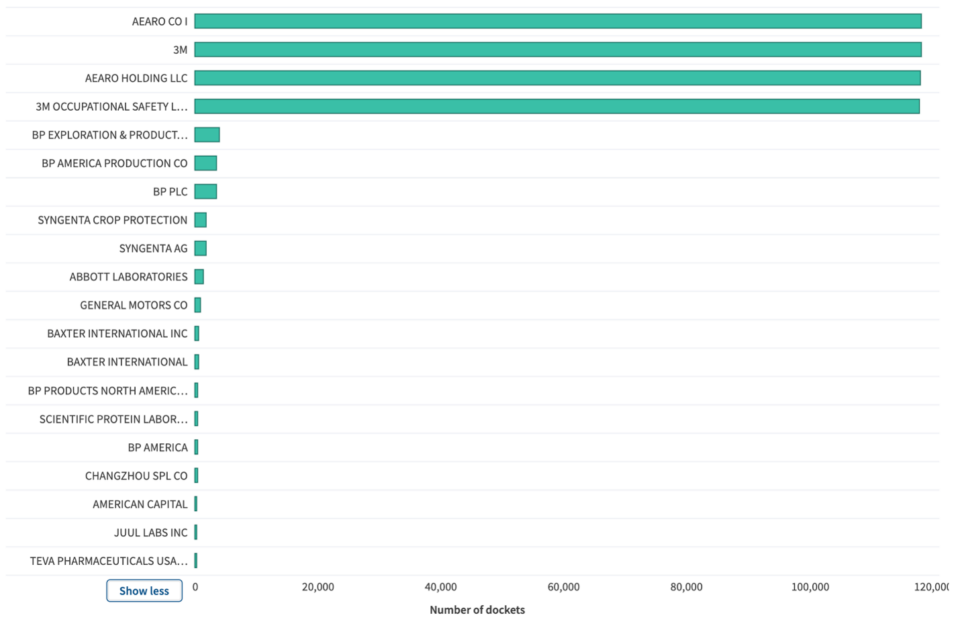
Kirkland & Ellis LLP: Dockets by Client. Graph created using Westlaw Analytics.
Kirkland is the world’s largest law firm in terms of revenue. The firm is using a significant portion of its over 3,000 attorneys and 6,500 employees to fight this case. Kirkland’s wealth of resources invested in the 3M litigation to deny hundreds of thousands of veterans compensation puts into perspective the 3,000 hours and dozens of veterans Kirkland represented pro bono last year. Kirkland’s commitment to the public good, like its client’s settlement offer, is woefully underfunded.
